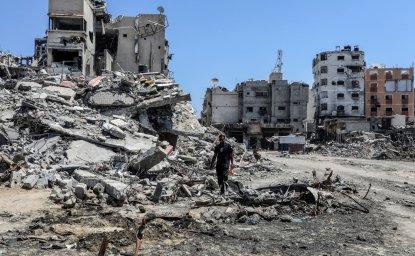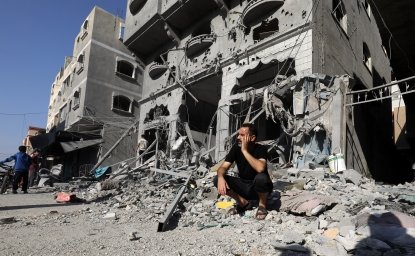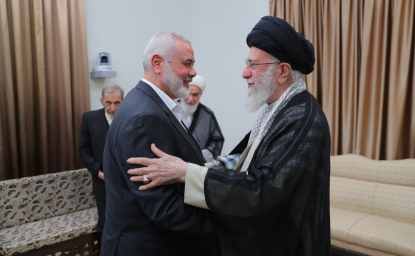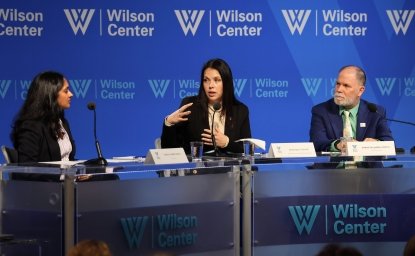In 2015, non-state actors such as ISIS – also known as ISIL, Daesh, or the Islamic State – committed serious human rights abuses across the Middle East, according to the State Department’s Country Report on Human Rights Practices. In his preface to the report, Secretary of State John Kerry noted ISIS’s “shocking abuses,” which included attacks on civilians, kidnapping, forced marriages, and other crimes. The following are excerpts from the report.
Secretary of State John Kerry’s Preface
This year we witnessed shocking abuses of human rights, violations of international humanitarian law, and other criminal acts by non-state actors such as Da’esh, Boko Haram, al Shabaab, the Taliban, transnational criminal organizations, and others. The range of abuses included genocide and crimes against humanity directed against religious minorities in Iraq and Syria.
Violent non-state actors do not come from nowhere: they flourish in the absence of credible and effective state institutions, where avenues for free and peaceful expression of opinion are blocked, where court systems lack credibility, where unchecked security forces instill fear in populations, and where even the most basic of day-to-day transactions by citizens with their government are characterized by corruption.
Iraq
“Sectarian violence fueled by the actions of Da’esh (also known as the Islamic State of Iraq and the Levant) continued to divide the country. Destabilizing violence occurred throughout the year as government forces fought to liberate territory lost to Da’esh, principally in Arab Sunni and some mixed ethnosectarian areas. Armed clashes between Da’esh and government forces caused civilian hardship. By year’s end the number of internally displaced persons (IDPs) had surpassed 3.2 million. The country also hosted 245,000 Syrian refugees, most of whom have settled in the Iraqi Kurdistan Region (IKR). Although donor funding increased, government response fell short of rapidly rising humanitarian demands, and displaced populations became destitute, leading some citizens to seek refuge abroad.
“Severe human rights problems were widespread. Da’esh committed the overwhelming number of serious human rights abuses, including attacks against civilians, especially Shia but also Sunnis who opposed Da’esh; members of other religious and ethnic minorities; women; and children. Some Shia PMF reportedly committed human rights violations. Numerous reports continued during the year of Shia PMF killing, torturing, kidnapping, and extorting civilians. Simultaneously, to a much lesser extent, government forces reportedly engaged in abuses against civilians in liberated areas, such as arbitrary detentions and limits on freedom of movement. Sectarian hostility, widespread corruption, and lack of transparency at all levels of government and society weakened the government’s authority and worsened effective human rights protections.”
“Terrorists committed the overwhelming number of serious human rights abuses. Da’esh members committed acts of violence on a mass scale, including killing by suicide bombings, improvised explosive devices, execution-style shootings, public beheadings, and other forms of executions. They also engaged in kidnapping, rape, enslavement, forced marriage, sexual violence, committing such acts against civilians from a wide variety of religious and ethnic backgrounds, including Shia, Sunni, Kurds, Christians, and members of other religious and ethnic groups, as well as religious pilgrims. Reports of Da’esh perpetrating gender-based violence, recruiting child soldiers, and destroying civilian infrastructure and cultural heritage sites were credible and common. The government initiated investigations of Da’esh’s human rights abuses, such as the reported June 2014 massacre of as many as 1,700 largely Shia Air Force recruits at Camp Speicher. Official conclusions were not publicly available.”
Syria
Some extremist opposition groups, including armed terrorist groups, such as the al-Qaida-linked Jabhat al-Nusra, also committed a wide range of abuses, including those involving massacres, bombings, and kidnappings; unlawful detention; torture; executions; and forced evacuations from homes based on sectarian identity. Da’esh took control of the eastern governorates of Raqqa and Deir al-Zour, where it committed massive abuses, according to numerous human rights organizations, the media, UN reports, and Da’esh itself. According to the media and eyewitnesses, these abuses included mass executions; stonings of women and men accused of adultery; crucifixions of civilians; public executions of foreign journalists, aid workers, and those suspected of “being gay.” Human trafficking and the forcible recruitment and use of children in the conflict increased. There were reports of forced marriages of women and girls for sexual slavery among Da’esh fighters.
Libya
“During the year violent extremist organizations expanded their influence, controlling large sections of territory in the eastern part of the country. Additionally, terrorist groups such as Ansar al-Sharia Da’esh conducted targeted killings, kidnappings, and suicide bombings that resulted in the deaths of hundreds of civilians and officials, primarily in the areas around Benghazi, Sirte, and Derna. Da’esh effectively controlled Sirte for most of the year. Derna remained under the control of designated terrorist group Ansar al-Sharia and other Islamist militants, who were responsible for extrajudicial killings and other serious human rights violations.”
“Reports indicated extremist and terrorist organizations played a prominent role in the targeted killings, kidnappings, and suicide bombings perpetrated against both government officials and civilians. Although many incidents saw no claims of responsibility, observers attributed most to terrorist groups such as Da’esh, Ansar al-Sharia, and its affiliates. Criminal groups or armed elements affiliated with both the government and its opponents may have carried out others. Extremist groups using vehicle-borne explosive devices typically targeted military officials and killed scores of persons during the year.
“On February 15, a video published on social media depicted the beheading of 21 Egyptian Coptic migrant workers on an unidentified beach. The “Tripoli Province” of Da’esh claimed responsibility for the killings, and the Egyptian government confirmed the deaths of 21 Egyptian citizens. On February 16, two missiles from Egyptian airstrikes targeting suspected Da’esh forces hit a residential neighborhood, killing seven civilians, according to Amnesty International. An April 19 video showed the execution of approximately 30 Ethiopian Christians by beheading and gunshot. Da’esh claimed responsibility for these killings, and the Ethiopian government confirmed that those killed in the video were Ethiopian citizens.”
“Although exact figures were impossible to obtain, extremist bombings and killings probably resulted in hundreds of deaths. Terrorist organizations, such as Da’esh, Ansar al-Sharia, and their affiliates likely carried out much of the violence, although in many instances the perpetrators were unknown. On August 12, members of Da’esh killed Sheikh Khalid Ben Rajah, a local imam in Sirte, after he refused to relinquish control of his mosque. An uprising against Da’esh in Sirte resulted, which led to Da’esh killing members of the uprising and hanging their corpses from streetlights.”
Click here to access the full report
Photo credits: state.gov, CIA world factbook

The Islamists
Learn more about Hamas and how it relates to similarly aligned organizations throughout the region. Read more

Explore More
Browse Insights & Analysis
Israel Escalates Attacks in Gaza: What’s Next?

Israel Expands Operations on Multiple Fronts: Perspectives on the Conflict

